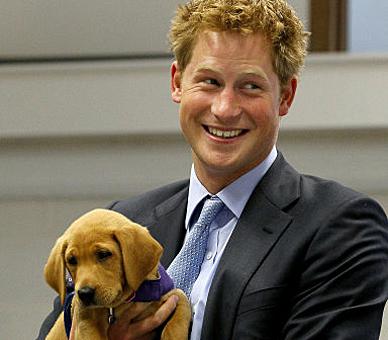 Prince Harry . Should those naked pictures remain private?
Prince Harry . Should those naked pictures remain private?
The background
Prince Henry of Wales – otherwise known as Prince Harry – has been in rather a lot of trouble recently, after pictures of the young royal in his birthday suit in Las Vegas were transmitted around the world. The photographs, which Clarence House has confirmed are real, were first displayed to the public by American gossip website TMZ.
The Royal Family has threatened legal action against newspapers in England if they publish the images – but despite this, The Sun has become the first newspaper to publish them. The paper, reported The Guardian, splashed the pictures over its front page with the headline “Heir it is!” The Sun claims that it is in the public interest to show the pictures.
What The Sun said
“There is a clear public interest in publishing the Harry pictures, in order for the debate around them to be fully informed. The photos have potential implications for the prince’s image representing Britain around the world. There are questions over his security during the Las Vegas holiday. Questions as to whether his position in the Army might be affected,” quoted on the BBC.
Not publishing the pictures is ludicrous
David Dinsmore, The Sun’s managing editor, said that the issue was one of freedom of the press; he argued that it wasn’t to do with morality. He said that the pictures were freely available to people on the internet, so it was “ludicrous” that they couldn’t be published in “the nation’s favorite paper,” quoted on The Guardian. Louise Mensch said that it was ridiculous for Prince Harry to expect privacy when he’d invited strangers into his room.
There is no public interest in the pictures
However, a media lawyer, Mark Stephens, said that there wasn’t any public interest in the pictures, and that the fact that the pictures were available in foreign media didn’t mean that English law didn’t apply; The Sun was being cynical about publishing them. He added that the consequences for the Leveson inquiry into media ethics were complex. “He [Lord Justice Leveson] will be sitting there looking at what the Sun has done, and thinking, ‘I’m going to have to regulate for the lowest common denominator, because I can’t trust them to look after themselves.”
How can you regulate the press in the age of the internet?
Torin Douglas on the BBC said that this showed how hard it is “to regulate the press in the age of the internet.” But we should sympathise with Leveson “as he ponders how best to reform press regulation.”
What the tabloids are arguing
“On one side,” said Adam Sherwin in The Independent, there is St James’s Palace, the Press Complaints Commission, and Lord Leveson; on the other side are “the most talked-about pictures in the world: juicy images of the party-loving third in line to the throne, stark naked.” But actually, where once most newspapers would have published, now most “bowed to legal warnings.” This is a “display of responsibility,” but it comes “at a price.” Tabloid newspapers are arguing that the prince’s security team let him into a compromising situation which might lead to blackmail, therefore it’s in the public interest.
The pictures are in the public interest
“It was an extraordinary decision not to publish,” said Professor Tim Luckhurst of the University of Kent’s Centre for Journalism, quoted on The Independent. ”Newspapers want to demonstrate impeccable behavior on privacy. But there was a powerful public interest defence. These were not paparazzi pictures… Did Harry have a legitimate expectation of privacy given that he invited these girls to his suite and allowed pictures to be taken?”

